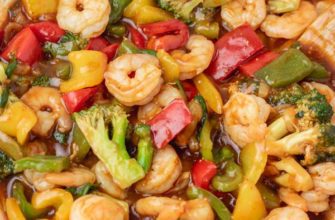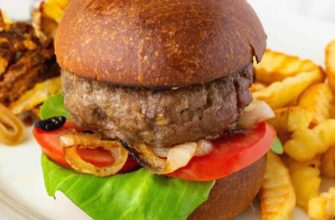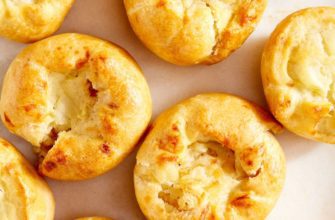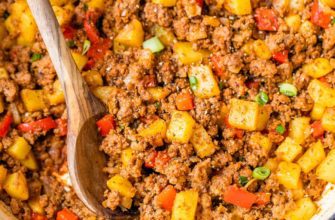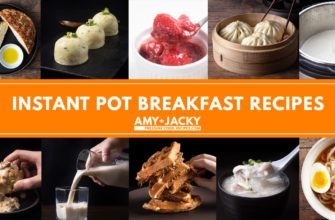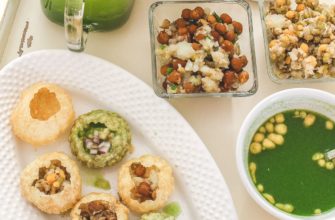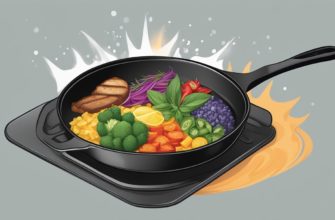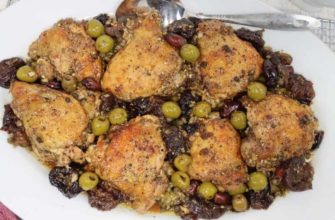Embarking on the path of crafting your own delectable loaves from scratch is an adventure that promises to awaken your senses and leave you with a profound sense of accomplishment. This guide aims to demystify the centuries-old process of sourdough breadmaking, allowing you to uncover the secrets behind creating tangy, mouth-watering masterpieces in the comfort of your own kitchen.
Within these pages, we will delve into the art of nurturing a living ecosystem of wild yeasts and bacteria, exploring the symbiotic relationship between flour, water, and time. Through the gentle coaxing of these humble ingredients, we will witness the magical transformation as a gooey, unassuming mixture blossoms into a complex, flavorful dough, rich with the distinct tang that only true sourdough can provide.
But do not be discouraged, for this is a journey accessible to all. Whether you are a seasoned baker or a curious novice, the principles of sourdough breadmaking are both simple and intricate, allowing for endless experimentation and creative expression. As you navigate these pages, you will not only learn the fundamental techniques but also gain the confidence to adapt and create your own signature loaves, steeped in flavor and brimming with character.
The Fundamentals of Sourdough Bread
Embarking on the journey of mastering the art of sourdough bread requires a strong understanding of its basics. Familiarizing yourself with the essential elements of this traditional bread-making process will lay the foundation for creating delicious and artisanal loaves.
1. Starter: Central to sourdough bread is the starter, also known as a sourdough culture or mother. This living mixture of flour and water acts as the leavening agent, providing the bread with its distinct flavor and texture. Mastering the art of maintaining and feeding a healthy starter is crucial in sourdough bread-making.
2. Fermentation: Sourdough bread relies on natural fermentation, a process that occurs when the wild yeast present in the starter feeds on the sugars in the flour. This extended fermentation period enhances the flavor, promotes better digestibility, and improves the bread’s overall quality.
3. Autolyse: An essential step in the sourdough bread-making process, autolyse involves combining the flour and water and allowing them to rest before incorporating the starter and salt. This resting period aids in gluten development, resulting in better dough structure and improved texture.
4. Proofing: After shaping the dough, it undergoes a final rise known as proofing. During this stage, the dough is given time to ferment and develop flavor, as well as to increase its volume. Proper proofing is crucial for achieving an airy and light crumb in the final loaf.
5. Baking: The final step in creating a beautiful loaf of sourdough bread involves baking. Achieving a crispy crust and a well-developed crumb requires understanding factors such as oven temperature, steam, and proper timing. Experimenting with different techniques and equipment can help you achieve the desired results.
By mastering the fundamentals of sourdough bread, you will be well-equipped to embark on a journey to create your own delicious, artisanal loaves. The knowledge and skill gained through understanding these basics will set you on the path to becoming an accomplished sourdough bread baker.
Understanding the Fermentation Process

Fermentation is an essential step in the creation of sourdough bread, leading to its distinct flavor, texture, and rise. This natural process, driven by beneficial bacteria and wild yeast, transforms the dough into a delicious and nutritious delicacy.
During fermentation, the presence of wild yeast converts carbohydrates into carbon dioxide gas, which causes the dough to rise. This gas production contributes to the airy and light texture of sourdough bread. Additionally, lactic acid bacteria thrive in the dough and produce lactic and acetic acids, giving the bread its tangy taste.
Understanding the fermentation process is crucial for achieving the desired results in sourdough bread baking. The length of fermentation, as well as the temperature and feeding schedule, directly impact the flavor, texture, and aroma of the final product. Patience and observation are key in properly managing the fermentation process.
Creating the optimal environment for fermentation involves balancing factors such as time, temperature, hydration levels, and the use of a starter or levain. The fermentation temperature influences the rate of fermentation, with cooler temperatures resulting in slower fermentation and vice versa. Controlling the temperature and providing a warm and stable environment for the dough is important for better control over the fermentation process.
An understanding of the fermentation process also helps bakers troubleshoot issues that may arise during sourdough bread baking. By observing the dough at different stages of fermentation, one can identify signs of under or over-fermentation, allowing adjustments to be made accordingly.
Ultimately, grasping the intricacies of the fermentation process is a fundamental step towards achieving mastery in the art of sourdough bread baking. With practice, patience, and attention to detail, bakers can develop a deeper understanding of how fermentation impacts the outcome, resulting in exceptional sourdough bread with unique flavor profiles.
What is Sourdough?
Sourdough is a time-honored culinary tradition that dates back centuries. It is an ancient method of making bread that relies on natural fermentation rather than commercial yeast. This traditional technique uses the natural yeasts present in the environment, allowing the bread to rise and develop a unique flavor and texture.
Sourdough bread is known for its tangy taste and chewy texture. The process begins by cultivating a sourdough starter, a mixture of flour and water that captures wild yeast and bacteria. Over time, this starter becomes a living culture that gives the bread its signature flavor and leavening power.
While traditional breads rely on commercial yeast for leavening, sourdough harnesses the power of lactic acid bacteria and wild yeasts. These microorganisms feed on the carbohydrates in the flour, producing carbon dioxide gas, which creates the characteristic bubbles and airy structure of sourdough bread. The longer fermentation process also allows for easier digestion and the breakdown of complex sugars.
Moreover, sourdough is not just limited to bread. This versatile dough can be used to create an array of delicious baked goods like pancakes, waffles, and even pizza crusts. With its distinct flavor and health benefits, mastering the art of sourdough opens up a world of culinary possibilities.
So, whether you are a newbie or an experienced baker, exploring the world of sourdough can be a delightful and rewarding journey. Embrace the process of nurturing a sourdough starter, experimenting with fermentation times, and enjoying the unique flavors and textures that this age-old technique brings to your baking adventures.
How Does Fermentation Work?
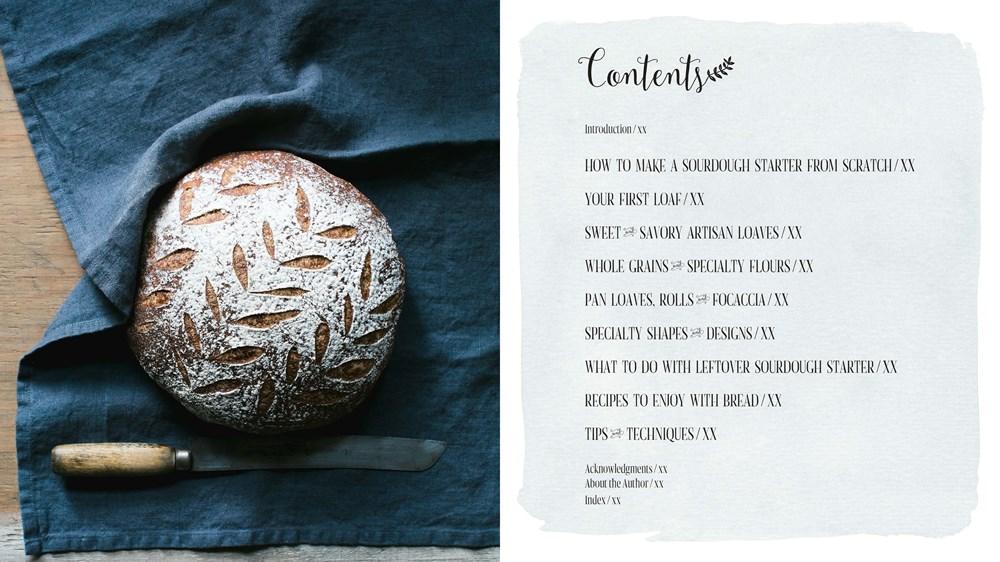
Fermentation is an essential process in the creation of sourdough bread. It is a natural transformation that occurs when the dough is exposed to a combination of yeast and bacteria. This intricate dance of microorganisms leads to the formation of carbon dioxide gas, which creates the unique texture and flavor of sourdough bread.
During fermentation, the yeast in the dough consumes the carbohydrates and produces carbon dioxide gas as a byproduct. This gas gets trapped within the dough, causing it to rise and develop air pockets. At the same time, the bacteria present in the sourdough starter release lactic acid, which contributes to the tangy flavor of the bread.
The fermentation process begins when the sourdough starter, a mixture of flour and water, is introduced to the dough. The starter contains wild yeast and lactic acid bacteria, which are naturally present in the environment. As these microorganisms feed on the flour, they multiply and start breaking down the complex sugars into simpler forms that they can digest.
It is important to give the dough enough time to ferment properly. This allows the microorganisms to do their work and develop the desired flavors. The duration of fermentation can vary depending on factors like temperature, hydration level, and the strength of the sourdough starter. By understanding the science behind fermentation, you can better control the outcome of your sourdough bread and achieve the perfect balance of taste, texture, and aroma.
- Fermentation is a natural transformation.
- Yeast and bacteria play a crucial role.
- Carbon dioxide gas creates the texture.
- Bacteria release lactic acid for flavor.
- Sourdough starter introduces microorganisms.
- Fermentation time affects the outcome.
The Role of Wild Yeast and Lactic Acid Bacteria
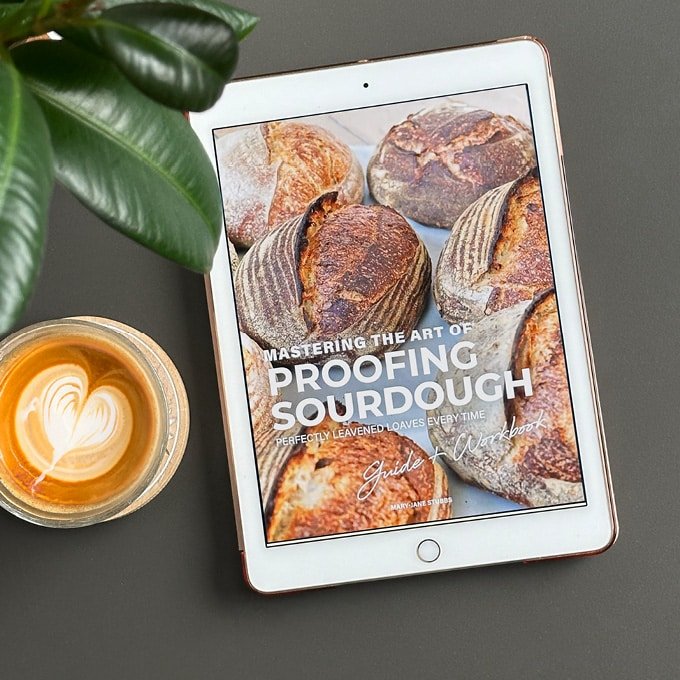
Understanding the significance of wild yeast and lactic acid bacteria is essential for aspiring sourdough bread enthusiasts. These natural microorganisms play a vital role in creating the distinctive flavor, texture, and rise of sourdough bread.
Wild yeast refers to the natural yeast present in the environment, such as in the air, on the surface of fruits, or even on the grains themselves. Unlike commercial yeast, which is a single strain specifically cultivated for breadmaking, wild yeast consists of diverse strains that contribute to the complex flavors found in sourdough bread. It feeds on the sugars in the dough and produces carbon dioxide gas, causing the bread to rise.
Lactic acid bacteria are another set of crucial microorganisms in sourdough bread. These bacterial strains produce lactic acid as a byproduct during fermentation, giving sourdough its characteristic tangy taste. They also create a conducive environment for yeast by lowering the pH level of the dough, helping to control the growth of harmful bacteria.
When making sourdough bread, the fermentation process relies on a symbiotic relationship between wild yeast and lactic acid bacteria. This dynamic duo converts the natural sugars in the dough into carbon dioxide and lactic acid, which transform the dough into a light, flavor-packed loaf. Additionally, the lactic acid bacteria improve the keeping qualities of the bread, making it stay fresh for a longer period.
In conclusion, the presence of wild yeast and lactic acid bacteria contributes significantly to the unique taste and characteristics of sourdough bread. Appreciating their role and understanding how to cultivate and manage them is key to mastering the art of baking delicious sourdough bread.
Essential Ingredients and Equipment
One of the key factors in creating delicious sourdough bread is having the right ingredients and equipment. In this section, we will explore the essential elements that will help you achieve success in your sourdough baking journey.
- Flour: The foundation of sourdough bread, choose high-quality flour that suits your preferences, whether it be all-purpose, whole wheat, or a combination.
- Water: The hydration of your dough is crucial for its texture and flavor. Use filtered or bottled water to avoid any chlorine or other contaminants that may impact the fermentation process.
- Salt: Besides enhancing the taste, salt also regulates fermentation, improves the dough’s structure, and helps control the growth of undesirable bacteria.
- Sourdough Starter: The heart and soul of sourdough bread, a lively and well-maintained starter is essential. Treat it like a pet, feeding it regularly to keep it active and ready for baking.
Now that we have covered the basic ingredients, let’s move on to the equipment you’ll need:
- Mixing Bowl: A large bowl with enough space for the dough to rise and be comfortably mixed is a must-have item for sourdough bread making.
- Digital Scale: Accuracy is crucial in sourdough baking, so invest in a digital scale to measure your ingredients precisely. This will ensure consistent results with each batch.
- Dough Scraper: A versatile tool used for scraping sticky dough off surfaces and dividing the dough during the shaping process.
- Dutch Oven or Baking Stone: To achieve a crispy crust and excellent oven spring, a Dutch oven or baking stone provides the necessary heat retention and even distribution.
- Bench Scraper: Used for shaping and moving the dough, a bench scraper is a handy tool that helps maintain the dough’s structure while working with it.
By having these essential ingredients and equipment in your kitchen, you are now well-prepared to embark on your sourdough bread-making journey. Remember, practice makes perfect, so don’t be discouraged if your first attempts are not flawless. With time, patience, and a passion for the craft, you will become a master of sourdough bread!
Flour Varieties for Sourdough
Sourdough bread is all about experimentation and finding the perfect combination of flavors and textures. One of the key factors in achieving that is selecting the right flour variety for your sourdough. Each flour variety brings its own unique characteristics to the final loaf, from flavor profiles to crumb structure. In this section, we will explore some of the different flour varieties commonly used in sourdough baking and their effects on the final outcome.
1. All-Purpose Flour: This versatile flour option is a popular choice for beginners. It provides a balanced flavor and can yield a slightly lighter texture, making it great for classic sourdough loaves.
2. Whole Wheat Flour: For those seeking a heartier and more rustic sourdough, whole wheat flour is an excellent choice. It imparts a nutty flavor and a denser crumb, adding depth and complexity to your bread.
3. Rye Flour: Rye flour offers a distinct flavor and adds a touch of earthiness to your sourdough. It has less gluten than wheat flour, resulting in a dense and moist crumb. Utilize it in small quantities or blend with other flours to avoid overpowering the taste.
4. Spelt Flour: Spelt flour, an ancient grain, lends a slightly sweet and nutty taste to your sourdough. It has a lower gluten content, resulting in a more delicate and tender crumb. Experiment by substituting or blending spelt flour with other flours to introduce a unique twist to your loaves.
5. Einkorn Flour: Einkorn flour, another ancient grain, brings a rich, buttery flavor to your sourdough. It has a higher protein content compared to modern wheat varieties, resulting in a chewier texture. Utilize it in combination with other flours for a well-rounded flavor profile.
Remember, these are just some of the flour varieties you can explore in your sourdough baking. Feel free to mix and match, find your favorites, and experiment to create your own signature loaf. The possibilities are endless, and with time and practice, you will discover the perfect flour combination for your unique sourdough creations.
Questions and answers
What is sourdough bread?
Sourdough bread is a type of bread made from naturally fermented dough using wild yeast and lactobacilli bacteria. It has a distinct tangy flavor and a chewy texture.
Why should I bake sourdough bread instead of buying it from a store?
Baking sourdough bread at home allows you to have complete control over the ingredients, ensuring that you use high-quality and organic flour. It also gives you the opportunity to create unique flavors and textures that are not commonly found in store-bought bread.
How do I create and maintain a sourdough starter?
To create a sourdough starter, you will need to mix flour and water in a jar and let it sit at room temperature, regularly feeding it with more flour and water for several days until it becomes bubbly and active. To maintain it, you will need to discard a portion of the starter and feed it with fresh flour and water at regular intervals.
What is the best way to achieve a crispy crust on sourdough bread?
To achieve a crispy crust on sourdough bread, it is important to bake it at a high temperature, ideally in a preheated Dutch oven or baking stone. Adding steam during the initial baking stages can also help to create a crusty exterior.
How long does it take to make sourdough bread from start to finish?
The process of making sourdough bread can take anywhere from 12 to 48 hours, depending on various factors such as the temperature, hydration level of the dough, and the strength of your sourdough starter. It requires a longer fermentation period compared to commercial yeast bread.
What is sourdough bread?
Sourdough bread is a type of bread made using natural yeast and bacteria instead of commercial yeast. It has a unique tangy flavor and a chewy texture.
How do I make a sourdough starter?
To make a sourdough starter, you need to mix flour and water and let it sit at room temperature for several days to allow wild yeast and bacteria to develop. Regular feedings of flour and water help the culture grow and become active for baking.
What makes sourdough bread different from regular bread?
Sourdough bread is different from regular bread because it relies on wild yeast and bacteria for leavening, while regular bread uses commercial yeast. This gives sourdough bread a distinct flavor and texture.
Why is it important to knead the sourdough dough?
Kneading the sourdough dough helps develop gluten, which gives the bread structure and elasticity. It also helps distribute the natural yeast and bacteria throughout the dough, ensuring a good rise and proper fermentation.
How long does it take to bake sourdough bread?
The baking time for sourdough bread depends on various factors, such as the recipe, the size of the loaf, and the desired level of crustiness. Generally, it takes about 40-60 minutes to bake, including preheating the oven and allowing the bread to cool after baking.



